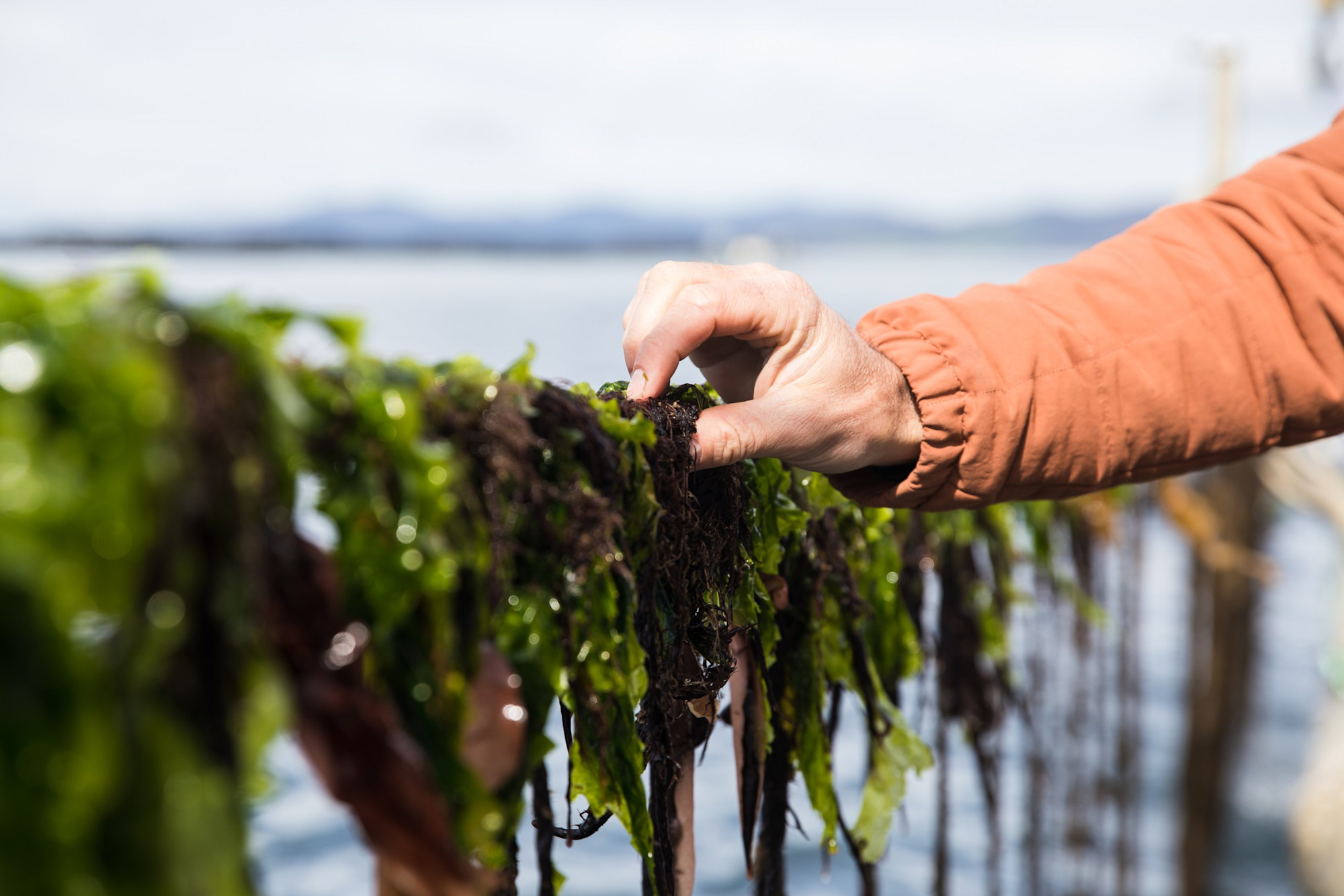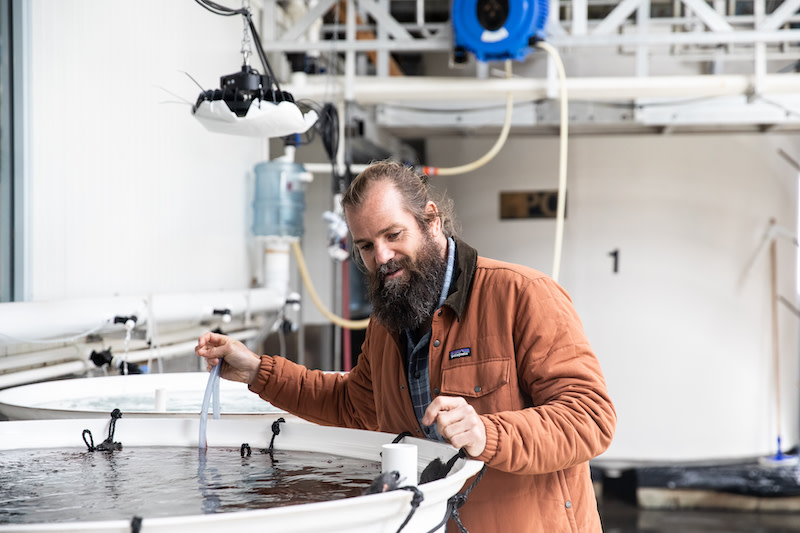In conversation with Sam Elsom, founder, Sea Forest

Sam Elsom's story is one of a designer who pivoted into the future, taking a fairly common discipline and applying a layer of material invention to potentially change the world through the mass cultivation of seaweed.
It’s a natural irony that oftentimes the bigger the challenge you face, the closer the answer lies. So when considering climate change—likely the biggest challenge we’ve ever faced—could it be true that the answer was closer than we could have ever imagined?
Sam Elsom seems to think so. Or at least, he has spent an entire career in search of it, with a slew of now-radical but inevitably-obvious experiments to solve environmental problems through commerce and design. And his latest discovery might prove to be the one that that brings it all together.

A career founded of sustainable design
Elsom’s focus on environmentally-tilted design began early in 2004, when Elsom Holdings was founded as a brand-turned-partner of sustainable fashion solutions. Exploring both environmentally and socially-sustainable methods of manufacturing, the brand partnered with the likes of MTV, General Pants, Quiksilver and One Teaspoon to usher in a more accountable form of brand design long before consumers demanded it.
Elsom experimented with a variety of material futures—fibres made from cow’s milk, sequins made of recycled plastic bottles to start—but it was his discovery of the power of seaweed in the late 2010s (and its untapped industrial potential) that really got him excited.
After heavy research on Australia’s unique opportunity towards this emerging industry, in 2018 Elsom began the legwork to study the effects of the wonder-material, and founded his company Sea Forest, Australia’s first seaweed agriculture company, to apply it to the real world.

Can seaweed save the planet?
Seaweed is a super-plant. It absorbs nutrients and CO2 via photosynthesis, growing by up to 60% of its own mass every single day. That’s about two feet daily. This in turn 'scrubs' the water, de-acidifying it while also creating a new habitat for creatures like oysters and mussels. It’s scalable, affordable; flood, fire and wind proof. And it could be the missing ingredient in our effort to reverse carbon pollution at the rate we need for a kinder future.
Asparagopsis—a red algae that forms the basis of Sea Forest’s work—is native to Australia, and offers solutions to a multitude of contributing causes of climate change.
Take cows for example: the livestock industry is responsible for a huge amount the world's methane production, a primary gas contributor to climate change. By adding just 30 grams of asparagopsis into a single cow's diet, it’s digestive impact reduces methane production by up to 98%. Farmers are enthusiastic too, knowing that it helps cows grow faster and eat less, further impacting their food needs, carbon footprint, and cost to produce. “This solution is remarkable because we can found an industry that creates jobs and education” he said from our recent ‘A Semi Permanent Hotel’ talk series. “We can disrupt while still supporting a $10b livestock industry."

The business of saving the world
It’s a recent trend, but the business world has realised that saving the planet could be a profitable exercise. Testament to this is the fact Sea Forest raised $34 million in funding after just two years of operation from some of the biggest players in the country (including surf champion Mick Fanning). But it also points to a broader generational shift in what consumers expect from the brands they shop with, as well as a burgeoning industry that can successfully profit off of saving the planet. While a non-existed industry just three years ago, brands (from agriculture to fashion) want what Elsom has to offer. Who wouldn’t?
“All these things are driven by consumers” he adds. “There has never been a time where more people are trying to address their impact. What we put in, consumers understand they are now responsible for taking back. That’s a future trend.”
“If we’re telling business that’s what we care about, then you will see that shift.”
“We’d love to see more companies publishing their life cycle assessments. If more companies were bold enough to say ‘this is where we are, but we’re on a mission to improve it and we’re going to show transparency to prove it’….it doesn’t matter where you start from, it’s where you want to get to.”

It’s hard to imagine that the individual designer can single-handedly solve a monumental issue such a climate change. But Elsom’s career covers nearly two decades of experimentation and iteration, helping launch a slew of famous fashion brands, changing consumer minds and the design landscape before landing on a higher industrial purpose.
"Most of Australia's producers are exploring their impact. Whether that's via the next generation. Or shareholders or customers, everybody is now looking at how to address this issue."
Sam's story is one of a designer who pivoted into the future, taking a fairly common discipline and applying a layer of material invention to potentially change the world. This process is not seaweed-agnostic (a strange proposition if there ever was one), but more than anything reveals that the solutions to our biggest problems are right in front of us.
What is sitting in front of you?